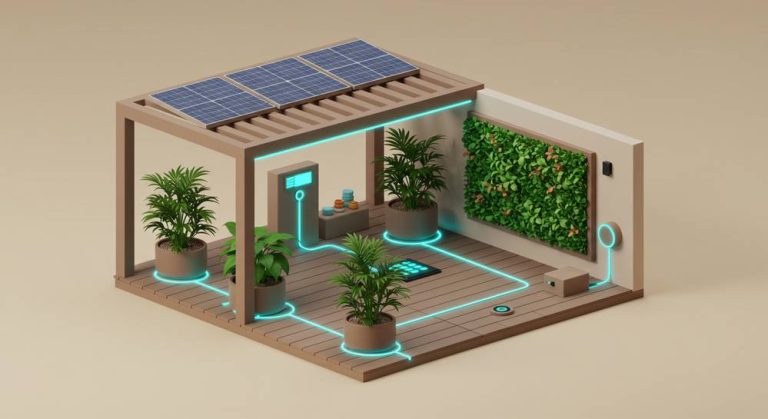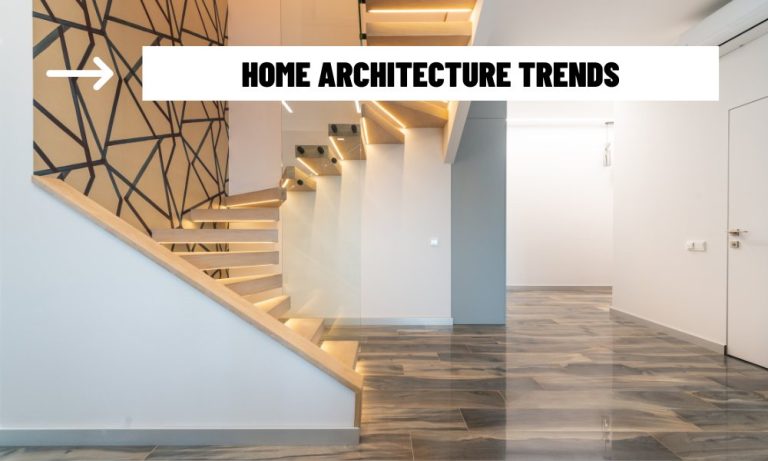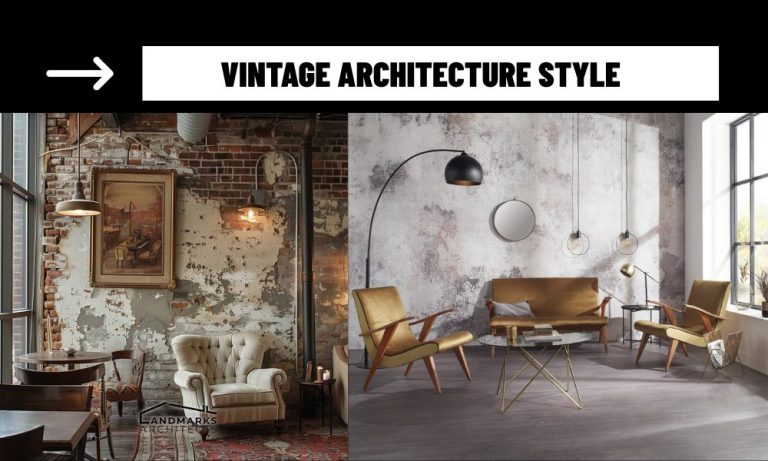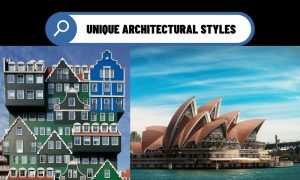Architecture is a reflection of the times, cultures, and technological advancements of the periods in which buildings are constructed. From the grandeur of ancient civilizations to the cutting-edge designs of modern structures, old architecture and new architecture showcase different priorities, aesthetics, and construction techniques. In this article, we will explore how architecture has evolved, from the majestic stone structures of ancient civilizations to the sleek, sustainable designs of the contemporary era.
Old Architecture: Built to Last, Rich in History
Key Characteristics:
Materials: Traditional architecture often relied on natural materials such as stone, wood, brick, and clay. The durability and strength of these materials were key in creating structures designed to withstand the test of time.
Craftsmanship: Old architecture is known for its intricate craftsmanship, with skilled artisans meticulously carving stone, wood, and metal to create detailed facades, columns, and ornamentation. It is often symbolic and designed to reflect cultural values, religion, or power.
Functionality vs. Aesthetics: While the functionality of ancient buildings was important, the aesthetics were often equally prioritized. Many old structures were designed to serve religious, ceremonial, or monumental purposes, reflecting the importance of beauty and symmetry.
Longevity: Many ancient buildings were built to last for centuries—if not millennia. The Great Pyramid of Giza, the Colosseum in Rome, and the Parthenon in Greece are prime examples of how ancient architecture was engineered for durability.
Examples of Old Architecture:
- The Parthenon (Athens, Greece)
- The Great Wall of China (China)
- The Colosseum (Rome, Italy)
- Stonehenge (England)
Significance:
Old architecture is not just about buildings; it’s about preserving history, identity, and culture. Ancient structures serve as a connection to our past, offering insight into how ancient societies lived, what they valued, and their technological capabilities. The architectural styles of the past, such as Gothic, Romanesque, Baroque, and Renaissance, laid the foundations for many of today’s design principles.
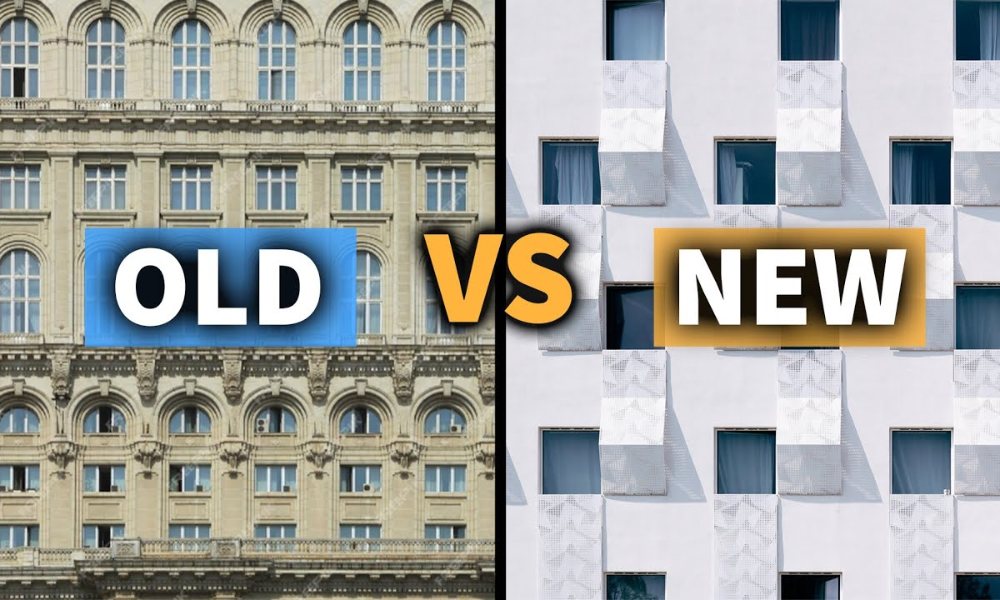
New Architecture: Innovation, Sustainability, and Technology
Key Characteristics:
Materials and Technology: Modern architecture utilizes a wide range of materials, including glass, steel, and concrete, combined with cutting-edge technology like smart glass and carbon fiber. These materials allow for larger, lighter, and more flexible designs, including high-rise buildings and innovative façades.
Sustainability and Energy Efficiency: With growing concerns over climate change and resource conservation, new architecture often focuses on sustainable building practices. This includes features like solar panels, energy-efficient HVAC systems, rainwater harvesting, and green roofs. Passive design strategies, such as maximizing natural light and ventilation, are increasingly common.
Minimalism and Clean Lines: Modern architecture embraces minimalist designs, focusing on simplicity, clean lines, and open spaces. Many contemporary buildings feature large windows, open-plan interiors, and a less-is-more aesthetic, moving away from ornamentation in favor of functionality.
Smart and Adaptive Spaces: New architecture often integrates smart technology, such as automated lighting, temperature controls, and security systems, which adapt to the needs of the users. The rise of smart cities is one example where urban planning and architecture are being integrated with digital technologies to create more efficient and connected environments.
Examples of New Architecture:
- The Burj Khalifa (Dubai, UAE)
- The Shard (London, UK)
- Sydney Opera House (Sydney, Australia)
- The Louvre Pyramid (Paris, France)
Significance
New architecture is characterized by a balance between functionality and innovation, emphasizing efficiency, sustainability, and adaptability. Modern buildings reflect the values of today’s world—environmental awareness, technological advancement, and the growing demand for urbanization. Many contemporary buildings also focus on the user experience, creating interactive spaces that respond to individual needs.
Comparison: Old vs. New Architecture
| Aspect | Old Architecture | New Architecture |
|---|---|---|
| Materials | Natural materials (stone, wood, clay) | Modern materials (steel, glass, concrete) |
| Design Aesthetic | Ornate, symbolic, often religious or royal | Minimalistic, sleek, functional |
| Construction Techniques | Manual labor, limited technology | Advanced technology, automation, AI |
| Functionality | Designed for long-term durability, culture, and religion | Focused on efficiency, sustainability, and flexibility |
| Technological Integration | Limited technological use | Smart tech integration, green energy solutions |
| Purpose | Monumental, ceremonial, and defensive | Urban development, workspaces, living spaces, leisure |
| Longevity | Built to last centuries, enduring designs | Aims for sustainability and adaptability |
The Future of Architecture: A Fusion of Old and New
While the differences between old architecture and new architecture are clear, there is an exciting trend of fusion in contemporary design. Modern architects are drawing inspiration from ancient styles and techniques to create innovative designs that respect the past while embracing the future. For example:
The Sagrada Familia in Barcelona, Spain, combines Gothic and Art Nouveau styles with modern construction techniques to create a unique, ever-evolving masterpiece.
The Eiffel Tower, built using modern iron techniques, reflects the industrial age’s rise while maintaining a classic, timeless structure.
Green buildings like the One World Trade Center integrate sustainability with symbolic, contemporary architecture.
In the future, we can expect to see more biophilic design (incorporating nature into buildings) and eco-friendly structures, combining the timeless beauty of old architecture with the demands of a rapidly changing world.


